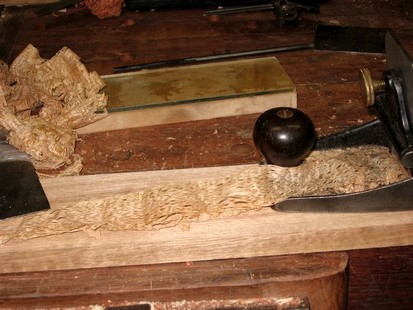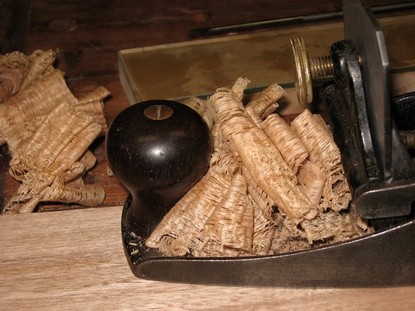OK, just for kicks i tried setting my LV scraping plane (112 equivalent) for moderately aggressive shaving on a maple offcut. The shavings range from under 1 to ~2 mils thick and basically look like plane shavings. The resulting surface has decent sheen, much better than I can do with sandpaper or an un-hooked scraper but worse than I can achieve with a smoothing plane.
Attachment 375661
This isn't rocket science or even remotely difficult. It takes a little practice to figure out how to turn a consistent hook without mangling the edge, but that's about it.
I can't understand for the life of me why L-N is providing the advice that they are. I understand that they cater to a lot of "well-heeled amateurs" who want stuff that works out of the box, but correct scraper setup is one of those things that everybody has to learn, preferably sooner rather than later. As noted above their assertion than thickening the blade eliminates the need for burring is incomprehensibly bogus - Adding more metal to the top of the iron doesn't change the cutting mechanics down at the edge.






 Reply With Quote
Reply With Quote












